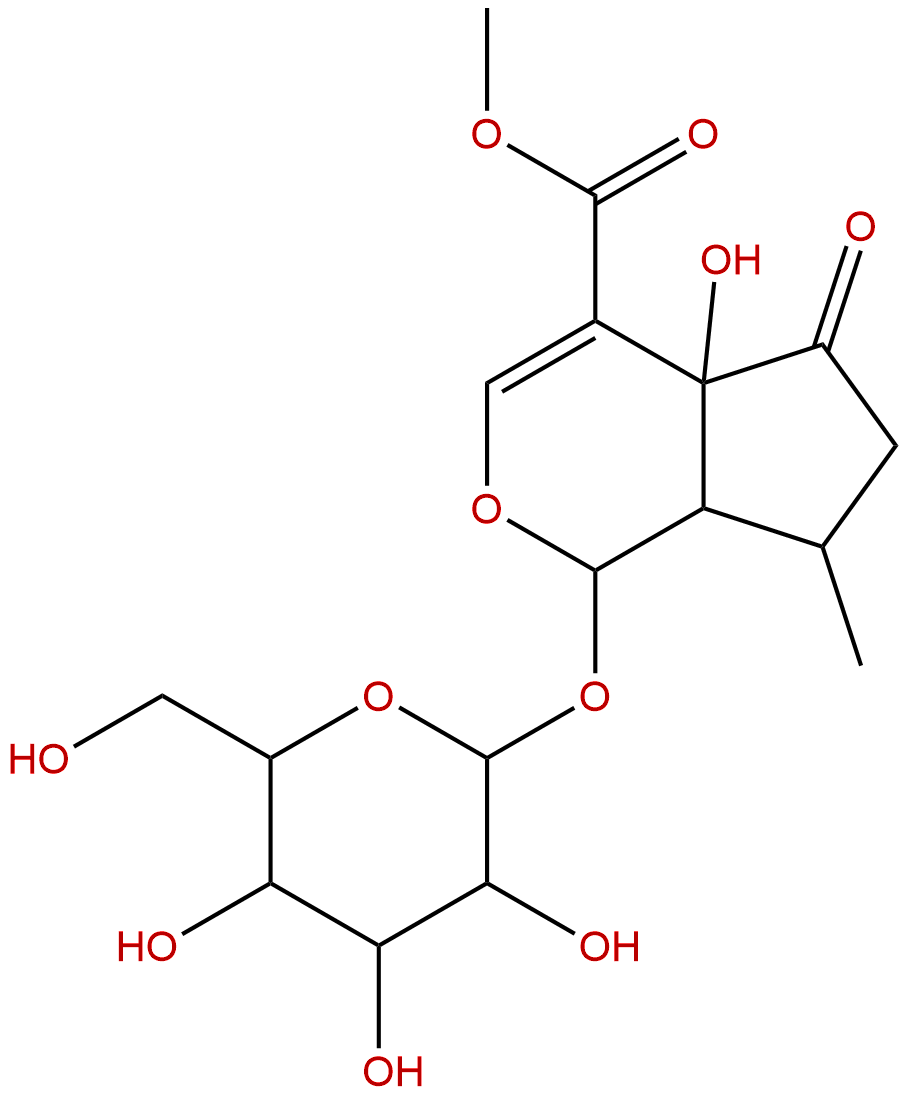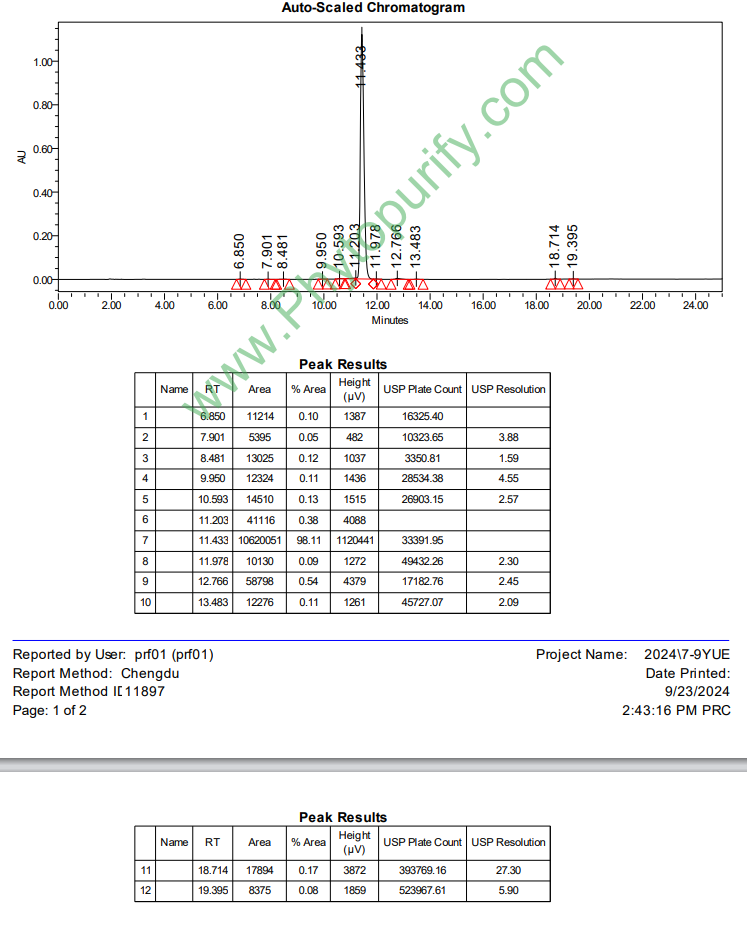
HastatosideCAS No.:50816-24-5
|
||||||||||
 |
|
|
||||||||

| Catalogue No.: | BP0704 |
| Formula: | C17H24O11 |
| Mol Weight: | 404.368 |
Synonym name:
Catalogue No.: BP0704
Cas No.: 50816-24-5
Formula: C17H24O11
Mol Weight: 404.368
Botanical Source: Verbena officinalis and Penstemon nitidus
Purity: 95%~99%
Analysis Method: HPLC-DAD or/and HPLC-ELSD
Identification Method: Mass, NMR
Packing: Brown vial or HDPE plastic bottle
Can be supplied from milligrams to grams.
For Reference Standard and R&D, Not for Human Use Directly.
Inquire for bulk scale.
Description:
Hastatoside and verbenalin are major sleep-promoting components of V. officinalis. Hastatoside has anti-inflammatory activity.
References:
Phytother Res. 2000 Sep;14(6):463-5.
Antiinflammatory activity and chemical composition of extracts of Verbena officinalis.
METHODS AND RESULTS:
In an attempt to locate the biologically active fraction(s) of the plant Verbena officinalis Linn. (Verbenaceae), a preliminary screening of successive petroleum ether, chloroform and methanol extracts of aerial parts for antiinflammatory activity using carrageenan paw oedema model was carried out. All three extracts were found to exhibit antiinflammatory activity with the chloroform extract being the most active. Chemical investigations of petroleum ether and chloroform extracts led to the isolation of beta-sitosterol, ursolic acid, oleanolic acid, 3-epiursolic acid, 3-epioleanolic acid, and minor triterpenoids of derivatives of ursolic acid and oleanolic acids.
CONCLUSIONS:
Chromatographic purification of the methanol extract yielded two iridoid glucosides, verbenalin and Hastatoside, a phenylpropanoid glycoside, verbascoside and beta-sitosterol-D-glucoside.
Sleep & Biological Rhythms, 2009, 7(3):211–217.
Hastatoside and verbenalin are sleep‐promoting components in Verbena officinalis
Herbal tea made from Verbena officinalis (V. officinalis) has traditionally been used for the treatment of insomnia and other nervous conditions.
METHODS AND RESULTS:
In this study, we examined the sleep-promoting activity of Hastatoside, verbenalin, and verbascoside, which are the major iridoids (Hastatoside and verbenalin) and polyphenol (verbascoside) components responsible for the pharmacological activity of V. officinalis, by electroencephalographic analysis of rats after oral administration of the compounds. Hastatoside (0.64 mmol/kg of body weight) and verbenalin (1.28 mmol/kg of body weight) increased the total time of non-rapid eye movement sleep during a 9-h period from 23.00 to 08.00 hours by 81% and 42%, respectively, with a lag time of about 3–5 h after the administration at 20.00 hours (lights-off time). Both compounds also increased the delta activity during non-rapid eye movement sleep. However, verbascoside had no effect on the amount of sleep.
CONCLUSIONS:
Therefore, Hastatoside and verbenalin are major sleep-promoting components of V. officinalis.
HPLC of Hastatoside
